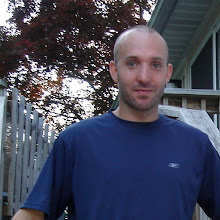One of the underrated aspects of training is stretching. And I’m not talking about the dynamic stretches you get during your warm-up. I’m talking about good old fashioned static stretching. These are stretches that you hold for 20 - 30 seconds. First it’s important to understand what stretching really is. Muscle fibers do not stretch. The surrounding fascia (connective tissue) probably stretches a little bit. What we are really doing when we stretch is manipulate our muscle spindles and Golgi Tendon Organs (yup, here’s the dorky part.) These are the proprioceptors that receive messages in the muscle and tendons from the spine, not brain. These act as our defense mechanism against injuring ourself due to reaching outside our range of motion. If the message came from the brain it would be too late and injury would ensue. The muscle spindles and GTO will receive one of two messages. The first is “Yeah, we’ll allow this” and the muscle will remain relaxed. The other is “HOLY CRAP, THIS IDIOT IS TRYING TO KILL US” which will result in a quick contraction of the muscle inhibiting further range of motion. This explains why active people are more “flexible” than inactive people. Active people are able to extend their acceptable range of motion through their activity. Here are some good rules to follow to add stretching to your program:
- Only stretch what needs to be stretched. If your hamstrings don’t need to be stretched then don’t stretch them. In fact, stretching what doesn’t need to be stretched can be detrimental. You are better off being tight everywhere than being flexible in only one area. So if you are good at a stretch that is likely the one that needs to be eliminated. Focus on the stretches you are not good at or don’t like.
- Stretching should be performed cold following foam rolling (woohoo! my first link to myself!) It is always best to foam roll for 3 - 5 minutes then perform a few static stretches. This is the best way to get chronic adaptations. If you stretch after warming up or post workout you will be able to go deeper into a stretch but you will not get chronic benefits due to the muscle spindles and GTO being more receptive to a greater range of motion. To get chronic flexibility improvements we need to manipulate the muscle spindles and GTO while cold.
- If you get massage work done you can get more from the massage by stretching what was worked on throughout the day after the body work. Performing 60 second holds on the areas that were worked seems to be most beneficial.
- If you work at a desk (ha ha) these are likely the areas that need the most attention (sub-lists are a pain on blogspot):
- hip flexors/quads (these get short due to being in the seated position all day
- chest (these muscles get short due to being hunched over the desk/computer, behind the steering wheel, seated at the dinner table all day)
- Other muscles that likely need attention are: 1) Adductors (groin), 2) Calves, 3) Hamstrings, 4) Glutes
That’s it. You can stretch out all these areas prior to each workout following your foam roll or just pick a couple to do each day. But don't forget this extremely important part of your overall fitness.
Mike

No comments:
Post a Comment